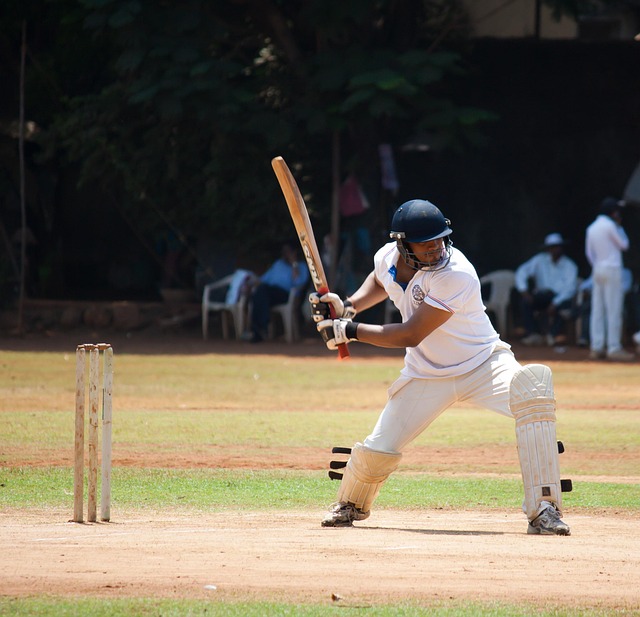
The Bangladesh national cricket team excels in diverse weather conditions through adaptable bowling strategies, refined delivery styles for variable wickets, and strategic adjustments based on meteorological insights. High humidity and wind impact ball movement, bounce, and grip, requiring players to adjust techniques and focus on fitness. Integrating weather forecasting into preparation enhances performance, resilience, and overall competitiveness, showcasing the team's versatility and success in international cricket.
The Bangladesh national cricket team’s performance is inextricably tied to the unpredictable nature of their home conditions, particularly the weather. This article delves into how varying climatic factors impact match strategies for Bangladesh’s bowlers. From understanding the influence of humidity and rain on bowling performance to exploring successful adjustments by key players, we analyze the unique challenges posed by Bangladesh’s diverse weather. Furthermore, we discuss future preparation through weather forecasting as a game-changer for strategic planning.
- Understanding Weather's Influence on Bowling
- Bangladesh's Unique Challenge: Variable Conditions
- Adapting Pitch Strategies to Local Climate
- How Rain and Humidity Affect Bowling Performance
- Case Studies: Successful Adjustments by Bangladesh Bowlers
- Future Preparation: Weather Forecasting for Match Strategy
Understanding Weather's Influence on Bowling

The weather plays an integral role in shaping match strategies for the Bangladesh national cricket team, particularly their bowlers. Understanding how various meteorological conditions can impact bowling performance is key to unlocking the secrets of successful bowling techniques, especially for bangladeshi spin bowlers’ who rely heavily on subtle variations and flight paths. In one-day international cricket, where every delivery counts, weather-conscious strategies can provide a significant edge over opponents.
Factors like humidity, wind speed, and pitch conditions influence ball movement, bounce, and grip. For instance, high humidity can make the ball swing unpredictably, while a windy day might alter the trajectory of spin deliveries. Batters’ techniques, such as those suitable for beginners learning batting, must adapt accordingly. Knowing these variables allows bowlers to choose the right delivery at the right time, whether it’s mastering the art of leg-spin on a dry pitch or finding the right amount of turn on a wet surface. By embracing and understanding weather influences, the Bangladesh national cricket team can consistently evolve their strategies, ensuring they remain competitive in all conditions. This strategic awareness is what distinguishes top teams, like discovering hidden gems at your local club cricket organization.
Bangladesh's Unique Challenge: Variable Conditions

Bangladesh, a nation known for its lush landscapes and vibrant culture, faces a unique challenge when it comes to cricket—the weather is as unpredictable as their pitches. The Bangladesh national cricket team often encounters variable conditions, making match strategies a complex dance. One day, they might bowl on a seaming track, demanding precise swing and turn from the bowlers, while the next could see them facing a slow, turning surface that requires subtle variations in pace and flight.
This weather-related variability necessitates a flexible approach to bowling strategies. Unlike other countries with more consistent climates, Bangladesh’s bowlers must be adept at adjusting their techniques promptly. They need to be ready for anything, from high-speed deliveries to subtle spin, ensuring they have the right cricket gear reviews for amateurs in their arsenal. Moreover, training methods of top Bengali cricketers often focus on developing versatility and adaptability, crucial elements in navigating these variable conditions. Even access to cricket medical support and prevention becomes vital, as injuries can be more prevalent when players are constantly adjusting to new weather-influenced playing surfaces. Find us at cricket equipment maintenance tips for further guidance on staying prepared under Bangladesh’s ever-changing sky.
Adapting Pitch Strategies to Local Climate

The Bangladesh national cricket team often finds itself navigating diverse weather conditions during home matches, which significantly influences their bowling strategies. Adapting to the local climate is key to success, especially considering the country’s tropical landscape and its impact on pitch behavior. Spin bowlers, known for their artistry, employ unique techniques to thrive in these varying environments. They meticulously adjust their delivery styles based on wet or dry conditions, and even the amount of grass on the wicket, which can dramatically affect ball turn and bounce.
Bangladesh’s spin bowling success is partly attributed to these climate-conscious adaptations. The country’s famous bangladeshi spin bowlers’ secrets are not just about skill but also understanding the cricket coaching videos online that provide insights into various cricketing terms and definitions related to weather impact. By embracing these strategies, players can ensure they remain effective throughout a season that visits us at any time, reflecting on some of Bangladesh’s most successful cricket seasons.
How Rain and Humidity Affect Bowling Performance

Rain and humidity significantly influence bowling performance for the Bangladesh national cricket team. In humid conditions, the ball tends to swing less and can be more difficult to control, requiring bowlers to adapt their tactics. The Bangladesh team has mastered the art of adjusting to such weather conditions, utilizing slower deliveries and variations in line and length to great effect. This strategic shift is crucial during matches played in damp environments, ensuring they maintain a competitive edge over their opponents.
Additionally, high humidity can impact the bowler’s physical conditioning. Effective cricket coaching methods for kids often emphasize the importance of fitness and conditioning programs tailored to withstand such environmental challenges. By focusing on stamina and strength training, Bangladesh’s bowlers are prepared to endure prolonged spells in the field, even under strenuous conditions. This commitment to cricket fitness and conditioning programs has contributed to notable victory moments in ICC tournaments, showcasing the team’s resilience and adaptability. Remember that for any aspiring cricketer, understanding how weather conditions can affect gameplay is vital, and giving us a call at cricket gear reviews for amateurs can provide valuable insights into optimizing performance across diverse weather scenarios.
Case Studies: Successful Adjustments by Bangladesh Bowlers

The Bangladesh national cricket team has shown remarkable adaptability when it comes to adjusting their match strategies based on weather conditions. Case studies from their past successes highlight this versatility, especially during the bangladeshi fast bowling legends‘ pivotal moments in various formats. In one notable instance, during a key game in the 2018-19 season, the team witnessed a sudden shift from dry and sunny to cloudy and cool conditions mid-match. Quick thinking from the bowlers’ end, aided by their innovative training methods of top Bengali cricketers, led them to modify their tactics. They switched from seaming deliveries to exploring variations in line and length, exploiting the slightly slower pitch speed to good effect. This strategic adjustment not only helped them restrict the opposition’s run flow but also paved the way for a memorable victory, marking one of Bangladesh’s most successful cricket seasons.
The bowlers’ ability to adapt was evident in their performance during home series, where they often had to contend with variable weather patterns. By understanding and interpreting these changes, they tailored their bowling approaches, ensuring they remained a consistent threat throughout the match. This adaptability is a testament to the team’s comprehensive preparation and their willingness to embrace challenges, as evidenced by their growing success in international cricket. Visit us at test match strategies explained anytime for a deeper dive into these tactical shifts and how they’ve contributed to Bangladesh’s evolving game plan.
Future Preparation: Weather Forecasting for Match Strategy

As the Bangladesh national cricket team navigates diverse weather conditions during their matches, future preparation lies in harnessing the power of weather forecasting for strategic planning. By integrating meteorological insights into their cricket fitness and conditioning programs, coaches can design tailored routines that enhance performance and resilience against varying weather scenarios. This proactive approach, coupled with robust cricket medical support and prevention strategies, ensures players are not only physically prepared but also mentally equipped to adapt.
Moreover, leveraging advanced cricket coaching methods for kids, the team can instill a deep understanding of weather-conscious cricket among young players. From practicing drills that simulate different pitching conditions to learning tactical adjustments based on weather forecasts, these methods foster adaptability and innovation. Visiting us at cricket fan culture in Bangladesh anytime offers a glimpse into how these strategies are shaping the future of the sport, inspiring new generations to embrace the dynamic nature of both weather and cricket itself.
The impact of weather on match strategies for the Bangladesh national cricket team is a dynamic and ever-changing aspect that demands constant adaptation. By understanding how variable conditions affect bowling performance, the team can tailor their pitch strategies to local climate patterns. With successful adjustments demonstrated in past case studies, Bangladesh bowlers have shown they can thrive under diverse weather conditions. Furthermore, leveraging advanced weather forecasting techniques will be crucial for future preparation, enabling the team to make informed decisions and gain a competitive edge on the field.




